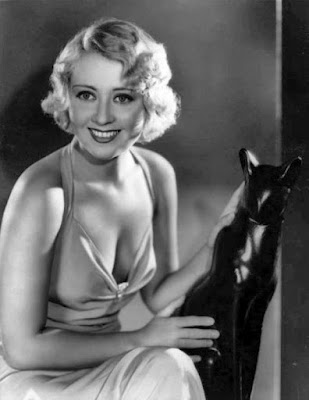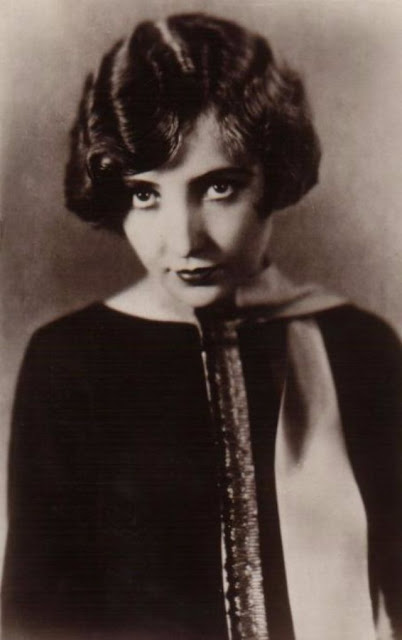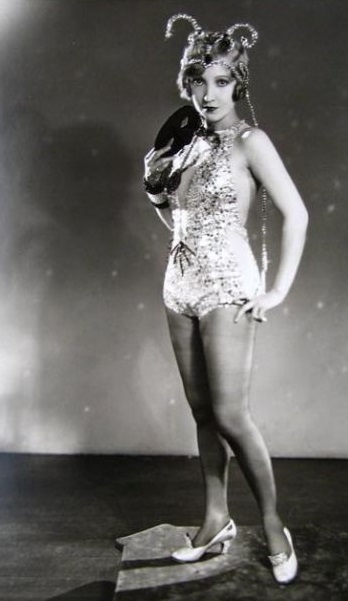We're ending Palindrome Week as it began: With a post featuring the great Bessie Love... although it's mostly a d20 System game resource about summoning the Nine Muses!
--
Bessie Love began her acting career in 1915, after her Mom told her to get a job. D.W. Griffith, at Biograph Studios, first gave her a couple small parts, but she struck a chord with audiences and her star rose quickly. She spent the next 15 years playing bubbly, energetic, and adventuresome young ladies. As sound arrived to film, Love was aging out of her signature roles, and her Hollywood career began to fizzle. She moved to England in the mid-1930s where she continued to act on radio, stage, and later, television.
 |
Bessie Love in Greece, 1938
(Photo by Dr. Henry W. Jones, Jr.) |
But, as revealed in
this post and
this post, Bessie Love was more than just an actress: She actively battled the forces of occult evil for 25 years, from 1925 through 1950.
During one of her adventures, in 1938, Love stopped the fascist government of Greece from gaining control of the Muses and channeling their powers to corrupt the creative urge of humans across the world. The Muses were so grateful for Love's intervention that they now often wear her form when appearing before petitioners and those exceptional people to whom they wish to offer gifts and inspiration unbidden. It was also at that time that she came into possession of the ritual through which a random or specific Muse can be called and asked for assistance.
SUMMONING A MUSE
There are two rituals for summoning a muse. They are essentially the same, but one involves an extra where a summoner (who must also be the petitioner--the person who is seeking the Muses's assistance) can name the specific Muse he wishes to call to him. Both versions of the ritual are detailed on a scroll that dates back to the days of Ancient Greece.
On the version of the rituals recovered by Bessie Love, notes scribbled in modern-day Greek on the back of the scroll state that either version should only be performed every ten days. "Performing either more frequently will result in total failure, or always call E.," the note concludes.
Summoning a Random Muse
Using ink mixed with the blood, sweat and tears of a creative person or performer, the petitioner must write his or name on fabric or paper that has been carried close to the skin of an artist or performer for at least three days (this does not need to be the same person the blood, sweat, and tears were collected from).
The petitioner must take the inscribed item to a place where creative or intellectual activities of creation or sharing take place, such as a theater, art studio, or university lecture hall. Muses may also be summoned on the slope of Mount Elikonas where the original temple to Zeus stood in ancient times, or anywhere on the island of Melos. (All these places are considered sacred by the Muses.)
Once at the intended summoning location, the petitioner must burn the item while reciting the following words:
Oh, beautiful Spirit of Creation!
I ask you to spark within me a fire!
I ask you to let the light of Inspiration burn through the night!
Come, beautiful Spirit of Creation!
 |
| Ourania the Muse, as she appears in modern day |
This incantation must be spoken loudly 1d6 times while the item is being consumed by the flames. Then, what appears to be a slender young woman appears, forming instantly from the faint tendrils of smoke twisting in the air. She says that she has been called by the drive to create and that she will help if she can.
The summoner gains a base +1 bonus to all Craft, Knowledge, and Perform skill checks made for three days after the Muse was called, with the benefit expiring as the sun sets on the third day. Specific Muses grant the summoner additional benefits which are detailed below. (These expire at the same time as the base benefit.)
A random Muse answers the petitioners call in the simplest form of the ritual. Unless asked, she does not reveal her name, nor spell out what boons she is granting the petitioner. To see which Muse appears and what benefits she grants the petitioner, the GM rolls a d10 on the following table:
d10 Roll/Muse Benefits Granted
1. Calliope +4 bonus to all Diplomacy, Knowledge (Law),
and Craft (Writing) skill checks. +2 bonus to
Will saves to resist Fear effects.
Calliope sometimes wears a crown.
2. Clio +4 bonus to all Research, Knowledge (History),
Perform (Guitar/Plucked Stringed Instruments)
skill checks.
Clio usually appears holding a book.
3. Erato +4 bonus to all Seduction, Sense Motive, and
Craft (Writing) skill checks. The bonus on
Craft (Writing) increases to +6 if the character
is writing romantic poetry or lyrics.
Erato usually appears carrying a lyre.
4. Euterpe +4 bonus to all Diplomacy, Investigate, and
Perform (Wind Instruments) skill checks.
Euterpe usually appears carrying a flute.
5. Melpomene +4 bonus to Bluff, Diplomacy, and Perform (Act)
skill checks. +4 bonus to all saving throws and
attack rolls while fighting on behalf of those
who live on the Isle of Melos.
Melpomene usually appears carrying a combat
knife and wearing a Tragedy mask (which she
removes before speaking to a petitioner).
6. Ourania +4 bonus to Knowledge (Astrology),
Knowledge (Astronomy), and Navigation
skill checks.
Ourania appears wearing a gown that glitters as
if it were made of stars and carrying a small globe
of the planet Earth.
7. Polymnia +4 bonus to Craft (Music), Craft (Sculpture),
Knowledge (Mathematics), Knowledge (Religion),
and Perform (Song) skill checks.
Polymnia usually appears carrying a lyre.
8. Terpsichore +4 bonus to all Knowledge and Perform (Dance)
skill checks. The bonus on Knowledge skill checks
increases to +6 if the skill check is being made to
pass the knowledge onto other characters.
Terpsichore usually appears wearing a laurel
wreath on her head and carrying a harp.
9. Thalia +4 bonus to Knowledge (Mathematics),
Craft (Structural), Craft (Writing/Art),
Perform (Comedy) skill checks. The bonus on
Craft (Writing/Art) increases to +6 if
the work is humorous in nature. +1 bonus to
attack rolls when wielding a scythe or sickle.
Thalia appears wearing a Comedy mask, which
she removes before speaking with the petitioner.
She also often carries a club painted in bright,
cheerful colors.
10. Erinyes +4 bonus to Bluff and Intimidate skill checks,
as well as a +2 bonus to all attack and damage
rolls. However, after the three days have passed,
if the summoner has harmed or killed innocent or
defenseless sentient beings within three days
prior to calling the Muses, or while enjoying the
benefits of the summoning, the summoner will be
subject to a
curse that imposes a -4 penalty on all
attack rolls, ability checks, skill checks, and
savings throws. The curse can only be lifted with
a
miracle,
wish, or if the summoner specifically
calls upon Erinyes by following the steps detailed
below. (Erinyes is not one of the Muses, but rather
a goddess of vengeance who enjoys answering
calls for of those other entities, posing as them,
and then cursing and forcing atonement out of
those she feels have escaped punishment for
misdeeds.)
Summoning a Specific Muse
The ritual and preparation needed to summon a particular Muse is similar to what is described above, with the following differences: The petitioner writes the name of the Muse he or she wishes to summon above his or her own name, and replaces "Spirit of Creation" in the first and last lines of the spoken incantation with the Muse's name.
 |
| Calliope, after being rescued by Bessie Love in 1938 |
Once the specific Muse appears, the petitioner is immediately drained of 500XP, the spiritual cost of demanding that a divine being manifest in the presence of a mortal. In addition to benefits the Muse grants upon appearing, she will also answer up to seven questions relating to arts, sciences, creation, and specific artists, performers, and scientists. (The number of questions that will be answered equals 1d6+1, with an additional questions equal to the petitioners Charisma bonus, to a maximum of seven.)
In addition to knowledge and the temporary blessings, a specific summoned Muse can also be asked to grant the petitioner one of the following permanent benefits, for a price:
*Gain Educated, Investigator, Skill Focus, or Leadership as a bonus feat.
*Make a single Craft, Knowledge, or Perform skill a permanent class skill.
*Gain a permanent +1 increase to Wisdom or Charisma attribute (maximum of three increases for each attribute, and the attribute cannot be raised of 19; the Muses don't want
too much competition from mortals)..
As soon as the Muse grants the petitioner's request, he or she is drained of 1,000XP.
Whether a character is wishing to summon a specific Muse, or is requesting a permanent benefit, the experience point cost cannot cause the character to drop below his or her current level.
If the 500XP drain would bring about a level loss, no points are drained. The GM should roll on the table above to see what Muse (or if Erinyes) appears.
If the 1,000XP cost would bring about a level loss, no points are drained. The Muse tells the character that she feels he or she is not ready to fully appreciate the gift being asked for, but that she may give it in the future.
The summoned Muse may also ask the petitioner to undertake a quest, or may offer additional assistance if the petitioner is engaged in a struggle she considered important. Some Muses may lend the character an artifact to use for the duration of the quest or struggle. The item is returned to the Muse once the quest is over, or the danger has passed. (These artifacts, and conditions surrounding their use, are detailed
in this post at the NUELOW Games blog.)
If the petitioner agrees to undertake a quest for the Muse, the 500XP lost during original summoning are immediately regained. This is the only way the XPs taken by the Muses can be restored (other than through the normal methods of earning additional experience points).
Multiple Summoning Attempts
Despite the note on the scroll recovered by Bessie Love in 1938, the ritual to call the Muses can be performed by the same petitioner with possible success as frequently as often as every four days. It's only with a ten-day period between summonings that there is a high likelihood of actually calling a Muse.
If less than three days go between summonings or summoning attempts, the call will always fail.
If there are between 4 and 9 days between summonings, the GM must roll 1d10 against the following table to see the results.
1d10 Result of Frequent Summoning Attempts
1-2. Failure. The Muses and Erinyes ignore the call.
3-8. Erinyes answers.
9-10. Roll on the Summon a Random Muse table
Summoning Erinyes
Calling upon Erinyes is not something that is recommended by mystics, occultists, or any sane individual. She exists to first and foremost to punish the wicked, and anyone who purposefully calls upon her will either find themselves a target of her punishment, or an instrument of search to avenge those who have been wronged. The one possible exception would be for someone who has been subjected to her curse while she was posing as another goddess, as asking her directly to lift the curse may be the easiest option.
There is a base 90% chance that an attempt to call Erinyes will be successful. That chance increases by 1% for each additional person who takes part in the ritual (91% for two individuals, 92% for three, 93% for four, and so on).
Those who wish to summon Erinyes, must write her name on a piece of paper, parchment, or thin piece of bark in their own blood. They must then wrap this document around a weapon that they have used against a sentient being, or which has been used by a sentient being against them. The item must then be placed into a fire, and the summoners must chant Erinyes' name with increasing volume 2d10+2 times. At the moment the goddess appears, the fire explodes upwards and is instantly snuffed out and replaced with thick, acrid smoke with swirls and coalesces into the manifestation of the goddess. The weapon and the material is was wrapped in are completely consumed, taken by the goddess as an initial offering.
 |
| A manifestation of Erinyes |
When directly called upon, Erinyes wastes no time with pleasantries, but immediately demands to know why those who have called her think they are worthy of her attention (or mercy, if they have been cursed by her).
If she finds the answer lacking (if it's too arrogant, or if an attempt is made to deceive her, for example), she glares silently and with obvious disgust at those who called her and then dissolves into smoke. If those who summoned her aren't already cursed, for the next three days, they suffer a -2 penalty to all skill checks, saving throws, and attack rolls (with the effect ending at sundown on the third day, or following a
miracle or
wish).
If Erinyes finds the characters worthy of her, her response depends on why she has been summoned.
If she is being called to aid in a quest for revenge: She will answer four questions that the summoner believes will provide help in bringing about the revenge being sought. She will warn those who summoned her that revenge may not satisfy their thirst for justice, and that that if they are not careful, they may themselves become the monster they seek to slay. If summoners do not subsequently seriously pursue their attempt to gain revenge, she will subject them to the curse described in the result for rolling a 10 on the table for summoning Muses in the Summoning a Random Muse section.
If she is being called to lift a curse on one or more of those who have summoned her: The summoners are charged with bringing a murderer or other criminal who has caused suffering to justice.
Here are some suggestions for missions that Erinyes may task characters with. She lifts her
curse as soon as characters agree to undertake her mission of vengeance, as well as granting them the temporary blessings described in the result for rolling a 10 on the table for summoning Muses in the Summoning a Random Muse section. If the characters do not subsequently engage in serious efforts to complete Erinyes' mission, the
curses all who summoned her, as described on the table.
--
All text in this post is released under the
Open Game License and may be reproduced in accordance with its terms. Copyright 2019 by Steve Miller.
If you this material useful and entertaining, you can find more like it at the
NUELOW Games blog. If you
really liked it, consider buying some of
the many game supplements and anthologies of comics and short stories that NUELOW Games has to offer.





























.jpg)






.jpg)
